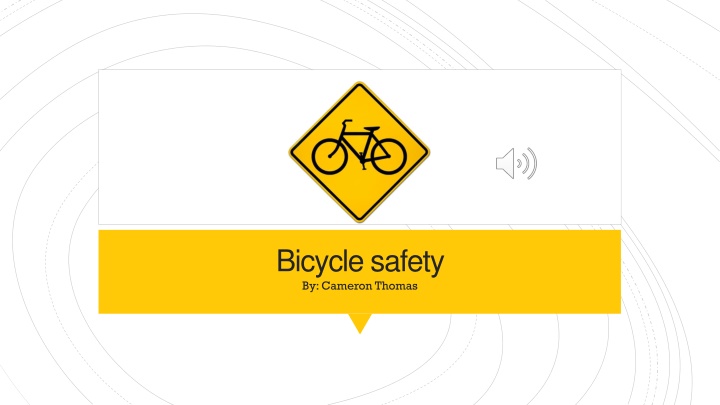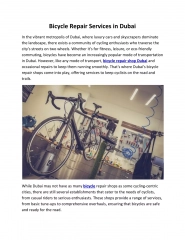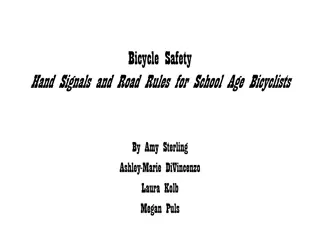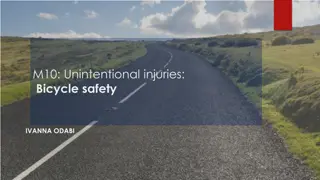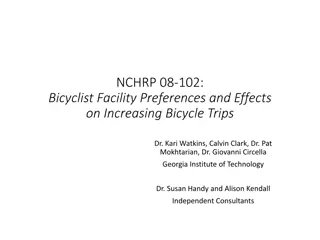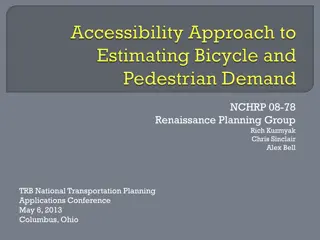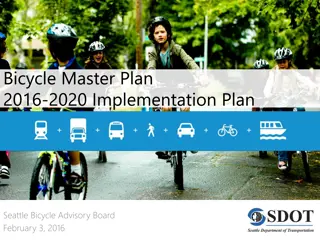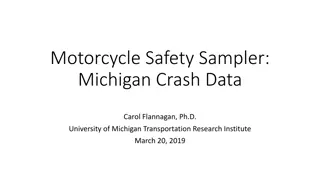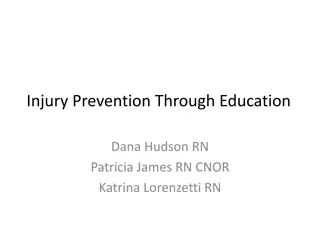Importance of Bicycle Safety for Riders
Bicycle safety is crucial as millions of riders face the risks of collisions, injuries, and even deaths annually. Developing safer habits, environments, and a biking culture can help reduce these incidents. Factors like rider experience, equipment condition, visibility, and pre-event preparations play key roles in promoting rider safety to prevent accidents and minimize the impact of injuries.
Download Presentation

Please find below an Image/Link to download the presentation.
The content on the website is provided AS IS for your information and personal use only. It may not be sold, licensed, or shared on other websites without obtaining consent from the author.If you encounter any issues during the download, it is possible that the publisher has removed the file from their server.
You are allowed to download the files provided on this website for personal or commercial use, subject to the condition that they are used lawfully. All files are the property of their respective owners.
The content on the website is provided AS IS for your information and personal use only. It may not be sold, licensed, or shared on other websites without obtaining consent from the author.
E N D
Presentation Transcript
Bicycle safety By: Cameron Thomas
2 100+ million bike riders annually Physical, economic, and environmental benefits Collisions are commonplace, leading to high injury numbers Why it matters However, injuries are not inevitable Need for safer habits, environments, and culture around biking (Breakaway Research Group, 2015) & (Fulton, Mason, Mcdonald, 2015)
For perspective 3 329,831 bike-related emergency department visits in 2017 904 people injured each day 1,024 bike-related deaths in 2017 Nearly 3 deaths a day (Centers for Disease Control and Prevention, 2019)
For perspective cont. 4 Victims primarily young, white, and male Even small numbers have significant real-world impact Gender Age Race (Centers for Disease Control and Prevention, 2019)
Risk factors 5 Person or host Agent Physical environment Social environment Does the rider have much experience biking? Is the rider intoxicated? Does the rider know where they re going? Does the rider have an appropriately sized bike? Do the bicycle s pedals and brakes work properly? Is the bike easily seen with lights or reflective gear? Is the surface the rider is traveling on wet or slick? Was there a bike lane for the rider? Was there proper lighting during the bike ride? Are shared lane road markings or signs common in the area? Is wearing a helmet seen as not cool among members in the community? Pre-event Was the rider wearing a helmet? Was the rider paying attention when the incident occurred? Did the bicycle helmet remain attached to the rider s head during the incident? Where did the incident occur? If the rider hit an object, was it moving or stationary? Event Did the rider have a first aid kit with them? Did the rider have a cell phone and service to call for help? Did the rider have to wait outside in extreme heat or cold for help after the incident? Did first responders arrive in a timely manner? Were any emergency departments or trauma centers nearby? Is proper media coverage given to the occurrence and severity of bicycle- related injuries? Post-event (Helak et al., 2017), (Finnoff, Laskowski, Altman, & Diehl, 2001), (Mesriani Law Group, 2019), (Rash-ha Wahi, Haworth, Debnath, & King, 2018), & (Wolfe, Arabian, Breeze, & Salzler, 2016)
6 Prevention as the solution Post-event (After an incident): Event (While biking) Pre-event (Primary prevention): Carry a cell phone with you Stay alert to your Always put on a helmet before for emergency surroundings, both riding a bike preparedness as a rider and a Increase your visibility in driver order to be seen Institute bicycle lane adoption and expansion for safe travel (Byrne et al., 2019), (Centers for Disease Control and Prevention, 2019), (National Highway Traffic Safety Administration, 2015, 2019), (Olivier & Creighton, 2016), & (Raihan & Alluri, 2017)
7 Who do you think of when you hear the words riding a bike? Biking is open to everyone Moving forward Injuries cut enjoyment short Collective action necessary Ultimate goal: Keep our wheels turning
